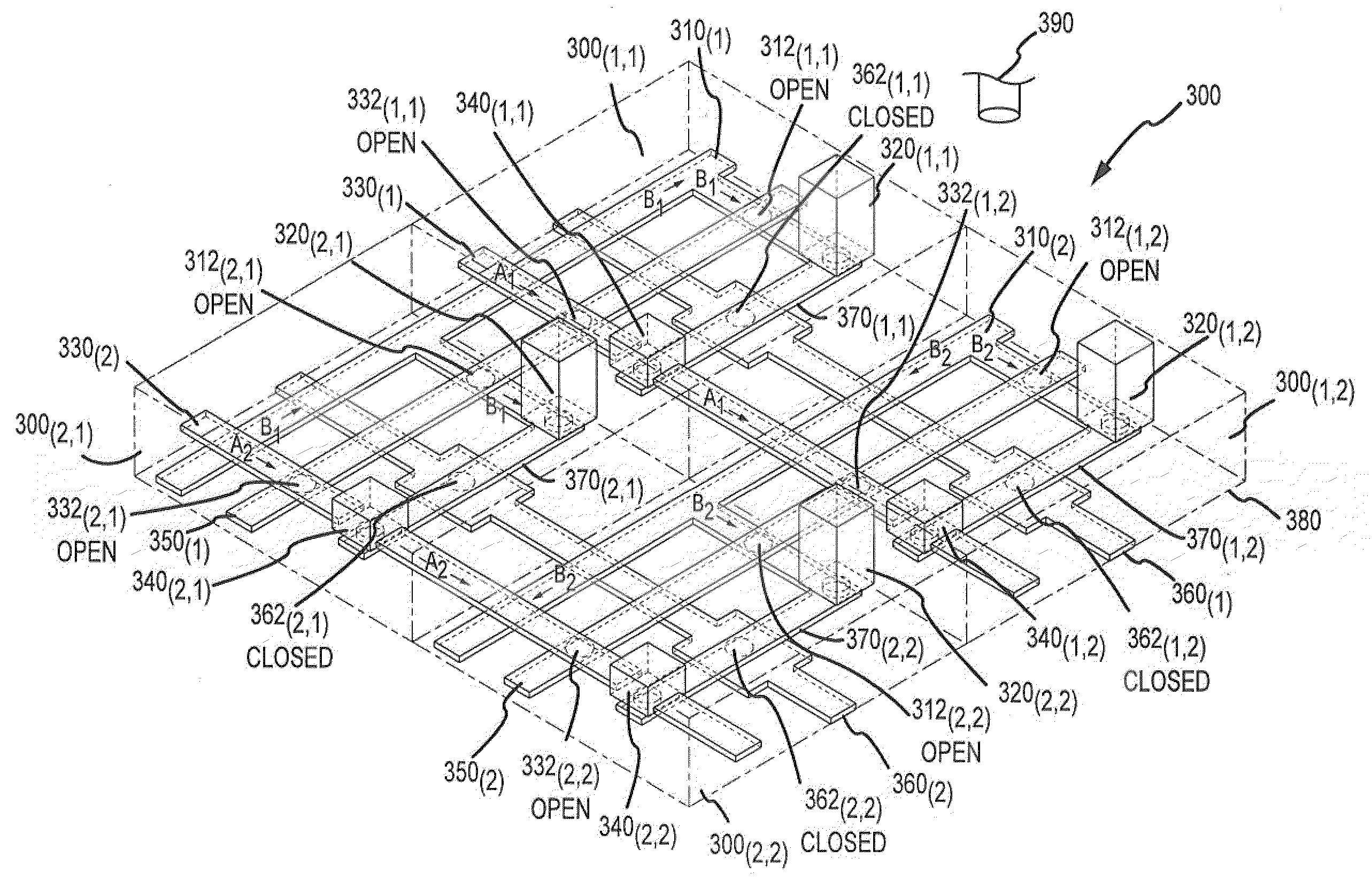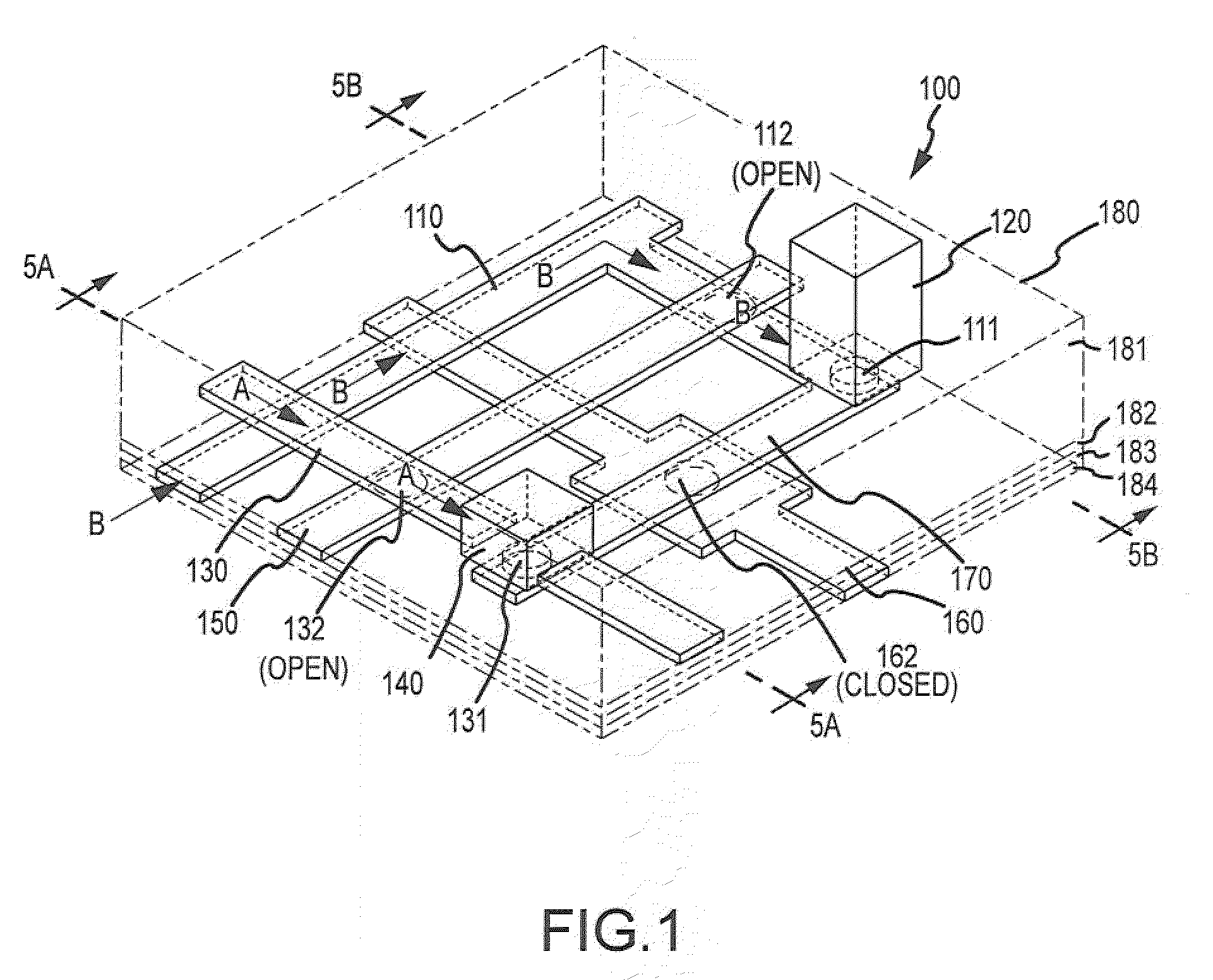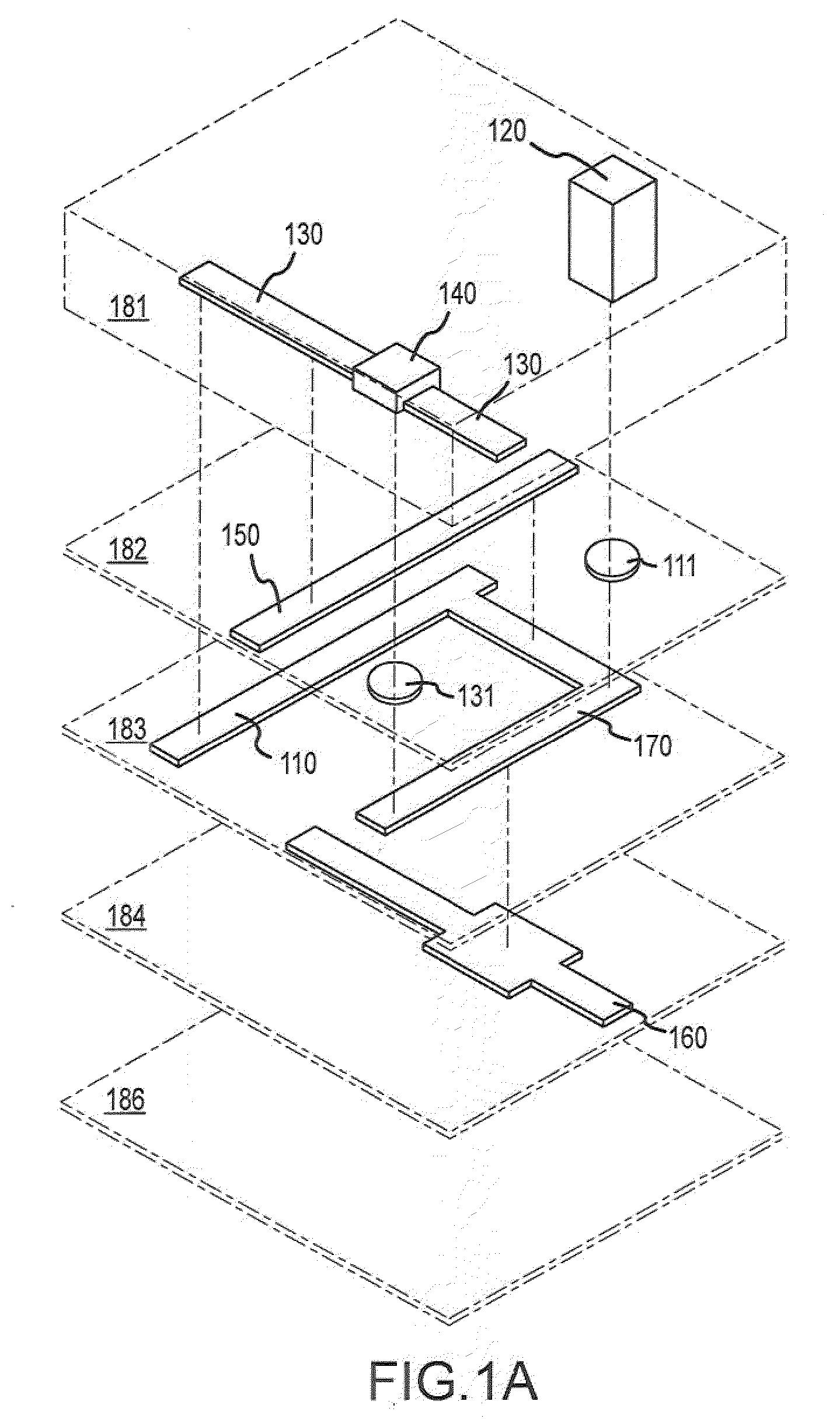Multilevel microfluidic systems and methods
a microfluidic system and multi-level technology, applied in the field of microfluidics, can solve the problems of difficult or expensive to obtain large testing samples, and achieve the effects of reducing time, cost and space requirements, high density of reaction chambers or zones, and improving performance characteristics
- Summary
- Abstract
- Description
- Claims
- Application Information
AI Technical Summary
Benefits of technology
Problems solved by technology
Method used
Image
Examples
first embodiment
[0120]In a first embodiment, a sample is obtained which is suspected of containing the target nucleic acid analyte of interest. The sample may be first reversed transcribed into cDNA and subjected to a preliminary amplification reaction to generate a pre-amplified sample. In the preliminary amplification reaction, the reverse transcribed sample is subjected to 14 cycles of PCR in order to increase the nucleic acid analytes by about 16,000 fold.
second embodiment
[0121]In a second embodiment, aliquots of the pre-amplified sample are distributed into separated compartments of a microfluidic device and combined with the appropriate reagents. In particular, the aliquot may have a volume of in the range of about 1 picoliter to about 500 nanoliters, more often in the range of about 100 picoliters to about 20 nanoliters, even more often in the range of about 1 nanoliter to about 20 nanoliters, and most often in the range of about 5 nanoliters to about 15 nanoliters. The reagents may include a labeled nucleic acid probe, PCR primers (e.g., forward primers and reverse primers), a thermostable DNA polymerase, GT buffer, an aqueous buffer, magnesium chloride and deoxynucleotide truphosphates, and may also include other non-reactive ingredients. In a specific aspect, a pre-sample mix may be prepared which may include TaqMan Universal PCR master Mix, AmpliTaq-Gold (about 5 units / μl), 20×GT buffer, and H2O. The pre-sample mix may be combined with the nuc...
third embodiment
[0125]In a third embodiment, a homogenous assay may be performed such as real-time PCR, for example. In this assay, the labeled nucleic acid probe contains a stretch of nucleic acid sequences that are capable of recognizing 8-mer and 9-mer motifs in the target nucleic acid analyte, as described above. FRET quenching of the labeled nucleic acid probe is irrevocably eliminated when the Taq polymerase reaches the region where the labeled probe is annealed to the target nucleic acid analyte, recognizes the probe-template hybrid as a substrate, and subsequently hydrolyzes phosphodiester bonds of the probe during primer-directed DNA amplification. The hydrolysis reaction irrevocably releases the quenching effect of the quencher dye on the reporter dye, thus resulting in increasing detector fluorescence with each successive PCR cycle. It will be appreciated that the invention is not limited to the use of real-time PCR, and that other variations of PCR, described above, may be used to detec...
PUM
| Property | Measurement | Unit |
|---|---|---|
| volume | aaaaa | aaaaa |
| length | aaaaa | aaaaa |
| pressure | aaaaa | aaaaa |
Abstract
Description
Claims
Application Information
 Login to View More
Login to View More - R&D
- Intellectual Property
- Life Sciences
- Materials
- Tech Scout
- Unparalleled Data Quality
- Higher Quality Content
- 60% Fewer Hallucinations
Browse by: Latest US Patents, China's latest patents, Technical Efficacy Thesaurus, Application Domain, Technology Topic, Popular Technical Reports.
© 2025 PatSnap. All rights reserved.Legal|Privacy policy|Modern Slavery Act Transparency Statement|Sitemap|About US| Contact US: help@patsnap.com



